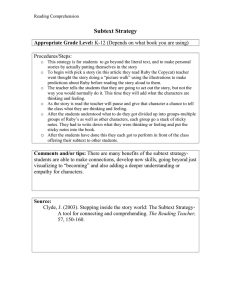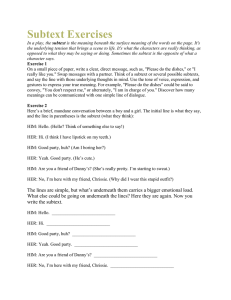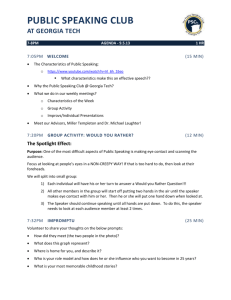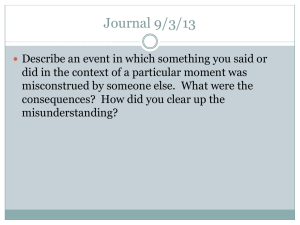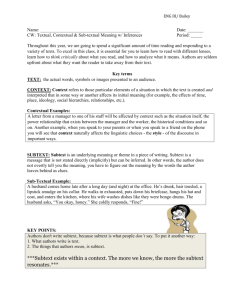gibb's categories of defensive & supportive communication
advertisement
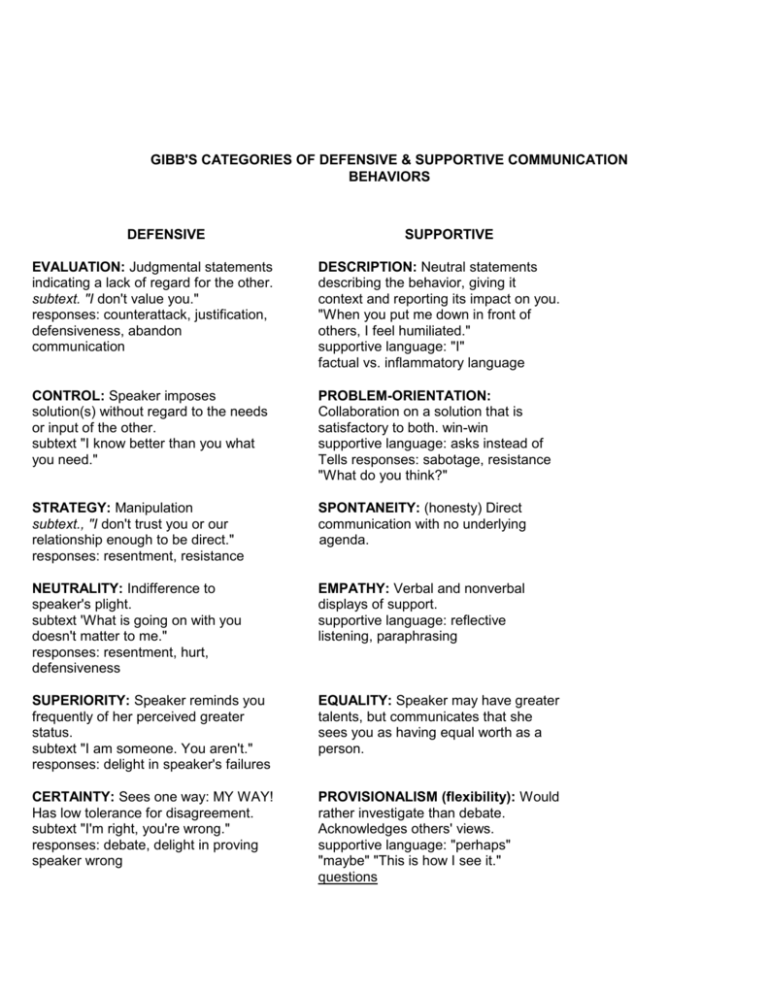
GIBB'S CATEGORIES OF DEFENSIVE & SUPPORTIVE COMMUNICATION BEHAVIORS DEFENSIVE SUPPORTIVE EVALUATION: Judgmental statements indicating a lack of regard for the other. subtext. "I don't value you." responses: counterattack, justification, defensiveness, abandon communication DESCRIPTION: Neutral statements describing the behavior, giving it context and reporting its impact on you. "When you put me down in front of others, I feel humiliated." supportive language: "I" factual vs. inflammatory language CONTROL: Speaker imposes solution(s) without regard to the needs or input of the other. subtext "I know better than you what you need." PROBLEM-ORIENTATION: Collaboration on a solution that is satisfactory to both. win-win supportive language: asks instead of Tells responses: sabotage, resistance "What do you think?" STRATEGY: Manipulation subtext., "I don't trust you or our relationship enough to be direct." responses: resentment, resistance SPONTANEITY: (honesty) Direct communication with no underlying agenda. NEUTRALITY: Indifference to speaker's plight. subtext 'What is going on with you doesn't matter to me." responses: resentment, hurt, defensiveness EMPATHY: Verbal and nonverbal displays of support. supportive language: reflective listening, paraphrasing SUPERIORITY: Speaker reminds you frequently of her perceived greater status. subtext "I am someone. You aren't." responses: delight in speaker's failures EQUALITY: Speaker may have greater talents, but communicates that she sees you as having equal worth as a person. CERTAINTY: Sees one way: MY WAY! Has low tolerance for disagreement. subtext "I'm right, you're wrong." responses: debate, delight in proving speaker wrong PROVISIONALISM (flexibility): Would rather investigate than debate. Acknowledges others' views. supportive language: "perhaps" "maybe" "This is how I see it." questions
